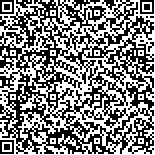本文已被:浏览 234次 下载 262次
投稿时间:2024-06-17 网络发布日期:2024-08-20
投稿时间:2024-06-17 网络发布日期:2024-08-20
中文摘要: 目的 分析老年患者内镜下黏膜剥离术(ESD)术后发热的危险因素,构建预测模型。方法 研究对象为南京医科大学第一附属医院2023年1月至2024年1月接受上消化道ESD治疗的老年患者,共500例。按照7∶3比例分为建模组(n=350)和验证组(n=150)。建模组患者根据ESD术后是否出现发热分为发热组与未发热组。收集两组患者住院电子病历系统资料信息,采用单因素和多因素logistic回归分析筛选出ESD术后的独立危险因素并构建预测模型,绘制ROC曲线评估预测模型的区分度。结果 行ESD治疗的350例老年患者中出现术后发热(体温≥37.3℃)90例(25.71%)。发热组患者中的女性、糖尿病史、术后出血、肿瘤最大直径>3 cm、放置导尿管的占比高于未发热组(P<0.05)。多因素二元 logistic回归分析结果显示,女性、糖尿病史、术后出血、肿瘤最大直径>3 cm、放置导尿管是老年患者ESD术后发热的独立危险因素(P<0.05)。ESD术后发热预测模型预测效能、校准度良好,具有临床实用性。结论 女性、糖尿病史、术后出血、肿瘤最大直径>3 cm、放置导尿管是老年患者ESD术后发热的危险因素,医务人员需重点关注这些因素,预测术后发热发生风险,通过构建预测模型,可为早期识别和预防老年患者ESD术后发热提供实用工具。
Abstract:Objective To analyze the risk factors for postoperative fever in elderly patients after endoscopic mucosal dissection (ESD), and construct a predictive model. Methods The research subjects were 500 elderly patients who received upper gastrointestinal ESD treatment in The First Affiliated Hospital with Nanjing Medical University from January 2023 to January 2024. They were divided into a modeling group (n=350) and a validation group (n=150) in a 7∶3 ratio. The modeling group of patients was divided into fever group and non-fever group based on whether they experience fever after ESD surgery. Data were collected from inpatient electronic medical record systems. Univariate and multivariate logistic regression analysis were used to screen factors and a predictive model was established in elderly patients after ESD. ROC curve was used to evaluate the discriminability of the predictive model. Results A total of 90 elderly patients who underwent ESD treatment experienced postoperative fever (T≥37.3 ℃), with a postoperative fever incidence rate of 25.71%. The proportion of women, history of diabetes, postoperative bleeding, maximum tumor diameter>3 cm, and catheter placement in the fever group were higher than those in the non-fever group (P<0.05). Multivariate binary logistic regression analysis showed that women, history of diabetes, postoperative bleeding, maximum tumor diameter>3 cm, and placement of urinary catheter were independent risk factors for postoperative fever in elderly patients with ESD (P<0.05). The predictive performance and calibration of the ESD postoperative fever prediction model were good, and with clinical practicality. Conclusion Women, history of diabetes, postoperative hemorrhage, maximum tumor diameter>3 cm, and placement of urinary catheter are risk factors for postoperative fever in elderly patients with ESD. Medical personnel need to focus on these factors to predict the risk of postoperative fever. By building a prediction model, it can provide practical tools for early identification and prevention of postoperative fever in elderly patients with ESD.
文章编号: 中图分类号:R735 文献标志码:A
基金项目:江苏省人民医院临床能力提升工程(JSPH-MC-2022-11)
附件
| Author Name | Affiliation |
| ZHU Yahui, REN Shurong, YIN Qinqin, WEI Xing | Department of Gastroenterology, The First Affiliated Hospital with Nanjing Medical University, Nanjing, Jiangsu 210029, China |
引用文本:
朱亚会,任树荣,印琴琴,魏星.老年患者内镜下黏膜剥离术后发热预测模型的构建[J].中国临床研究,2024,37(8):1269-1273.
朱亚会,任树荣,印琴琴,魏星.老年患者内镜下黏膜剥离术后发热预测模型的构建[J].中国临床研究,2024,37(8):1269-1273.
